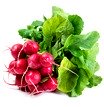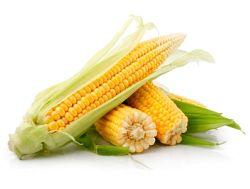Fruits and Veggies Rock:
How can you get more of them into your diet?
If you didn’t believe that fruits and veggies can benefit both health
and fitness (and, according to some, even happiness), you wouldn’t even be at this page, right? Because you had to have heard at least some of what Mom and/or
Grandma said about all those vitamins and minerals, etc., when you were a
kid. Still, for many of us, it’s one thing to hear and quite another to do, and perhaps you don’t “do” as many F&V as you (or the nutrition patrol) would prefer.
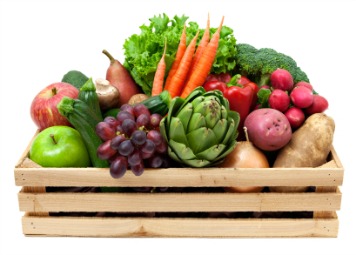
I fall short sometimes myself because, according to the U.S. Department of Agriculture, women exercising under 30 minutes a day should consume 2 to 2.5 cups of vegetables and 1 to 1.5 cups of fruit. For the guys at that level of exercise, you're looking at 2.5 to 3 cups of veggies and 2 cups of fruit.
Well, hey—those numbers don't sound so hard in the abstract, do they? But routinely pulling together that many cups of produce and then actually getting them down the hatch may be a somewhat different story.
Easy Ways to Consume More Fruits and Veggies
For those of us at the fruit stand, the great news is the many simple
ways to ease that fresh produce into our diets. And to grease the skids, here are three suggestions: keep prepped fruits and veggies handy, take a
simple approach to preparation, and avoid the overcooked veggie.
Keep the Fruits and Veggies Handy
The perennial bummer: even with plenty of fresh produce in the house, we may still bypass it if those goodies aren't clean and ready when we're tired, hassled, and/or famished ourselves.
Don't you then find the cheese, the salami, the peanuts way more appealing than the prospect of prepping some F&V on the spot? And that's the point at which fatigue and/or inertia nail you again. Uh-huh, they get me, too.
So, back off those bullies by waving your gorgeous (ready-to-go) fruits and veggies in their faces. Too rushed sometimes to do the work yourself? Pick up some ready-to-eat fruits and veggies for such occasions. But not every single day, please; variety is genuinely important.
Simple Is Good
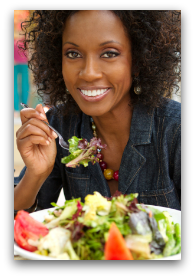
Today's no-brainer: the simpler you keep your fruit-and-veggie creations, the more "freshies" you’re likely to eat. After an intense day, for example, do you really feel like making ratatouille?
Or would you rather lightly cook some green beans or asparagus to butter or toss with a little pesto...or perhaps simply whip up a hearty main-dish salad? If you're saying no to the weeknight ratatouille, then say hello to our secret weapons: easy and handy.
Although easy and handy F&Vs may sound more like an oxymoron than a new paradigm, they're the secret to greater consumption. "Easy" and "handy" are also pillers of Flex Mode, my term for low-hassle ways to create healthful and enticing dishes and snacks.
Don't Overcook the Freshies
Still with me? Then, let us pause to shed a quick tear for the multitudes who believe they loathe many (possibly most) cooked vegetables. This hostility (IMHO) may stem in large part from woefully overcooked specimans of the past (or even present). I share such memories myself.
But one day, an epiphany: hey, I really like these and many other veggies when lightly cooked or sometimes merely blanched. Who knew? But if you despise certain veggies that even touch boiling water or steam, try them totally raw a time or two. You may discover some great new mealtime buddies.
Particularly with regard to cruciferous (a.k.a. brassica) veggies, the raw approach can be quite a revelation. In fact, you may be startled to discover that you like way more veggies than you thought you did—when they’re not cooked at all or, if so, merely blanched.
See Raw Vegetable Diet for more discussion of this tactic, perhaps bearing in mind that often the same may hold true for fruits as well.
Broaden Your Range of Options
If you undertake a "discovery mission," you may be startled at the volume and variety of fruits and veggies you turn up. What may also surprise you is how diverting such an endeavor can be: for example, have you ever heard of miner’s lettuce? Or fat hen? Or dragon fruit? Stay and watch the kid working with the dragon fruit; he's cute and also knows what he's doing.
Although you’ll find starter veggie lists/descriptions at this site, do expand your search to other sites and also to some of the excellent books available to you in either print or kindle versions. The more fruits and veggies you know, the more you can eat. Click here for a discussion of the broader approach we're talking about here.
Experiment and Improvise
You may surprise yourself with the imagination and creativity you bring to the "cause" of easing more F&V into your diet. Here are a few suggestions:
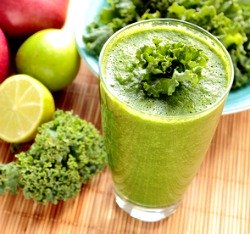
Add veggies to your breakfast menu now and then. One way I do that myself is by sautéing spinach and grape tomatoes with cooked steel-cut oats, grating on a little of whatever cheese is handy. You could do the same thing with grits. Or buzz up a quick breakfast smoothie.
Letching for a peanut butter sandwich? Add sliced bananas or perhaps sliced tomatoes. I make both of those combinations now and then and enjoy them a lot; perhaps you will as well.
Eat salads as often as possible and try new combinations: shredded fennel, chopped radicchio, penne, and walnuts; grated carrots and jicama (with lemon or lime juice); thinly sliced raw Brussels sprouts, plus chopped apples and cheddar; baked-potato salad with chopped celery and carrots; grated beets, carrots, turnip, and chopped walnuts (with plenty of lemon or lime juice). Also, add chopped dried fruits when it works: apricot and cranberry taste particularly good with certain combinations.
Consider making cold soups and sorbets or frozen yogurt more often during the summer months, as they're a great way to expand your F&V repertoire. Cucumbers, for example, make terrific cold soups, as do beets, and try cucumber-honeydew sorbet. Amazing! Plus, you can make quick and tasty frozen yogurts with Greek yogurt and frozen fruit: peaches and blueberries work particularly well, but branch out as well. (Cherries, perhaps?)
********
As you see, we're not talking rocket science here nor vast amounts of time and energy. Simple and handy are more than equal to the task...with perhaps some creativity, imagination, and daring thrown in. For you, a piece of cake (wink).
Please understand that the material at this site is NOT medical advice, as I am neither doctor nor nutritionist. What I am is merely someone who's lived successfully on a vegetarian diet for many decades...and I transitioned from omnivore to vegetarian gradually. Do check with your doctor, though, if you're considering big changes to your own diet. Also, be sure to find a dependable source of Vitamin B12.
Living Vegetarian the Easy Way
Copyright 2010-2024. Lynda Edwards. All rights reserved.
